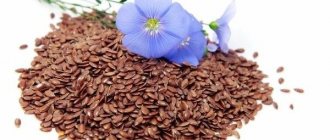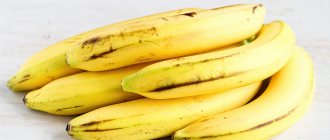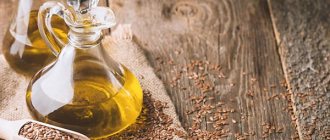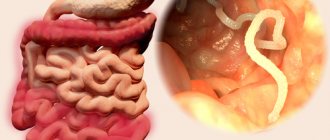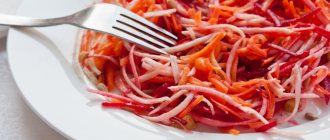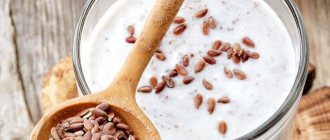Bran is a grain processing product consisting of the outer shells of grain crops. Bran contains fiber, an indigestible or insoluble fiber that reaches the large intestine unchanged. It is this property that has made the use of bran popular for constipation.
The product is considered one of the main sources of dietary fiber. Depending on the culture from which the fibers are obtained, the following types are distinguished:
- buckwheat;
- oatmeal;
- rice;
- barley;
- rye;
- wheat
A production by-product can remain after the grains are cleaned and after the flour is produced. Bran can be sold unchanged or as part of dietary supplements. The product is used for baking bread - its quantity is determined by the type of flour.
You've probably heard that nutritionists recommend eating wholemeal bread: it is made from low-refined flour. If there are no impurities in premium flour, then grade 1-2 requires the presence of a certain amount of coarse particles.
Your doctor may recommend using bran in its pure form or as part of biological food additives. They help cope with functional constipation and can be prescribed to people who consume insufficient amounts of dietary fiber in foods due to health conditions, taste preferences or eating conditions. For example, if eating large amounts of vegetables and fruits containing insoluble fiber is impossible due to food allergies or other characteristics, bran can partly compensate for this.
Bran contains both fiber and substances beneficial to the body. Insoluble fibers can be components of medications and dietary supplements used to normalize intestinal function. But bran and laxatives of this type are not interchangeable. Let us dwell in more detail on the composition and properties of bran.
Benefits for the intestines
Throttling saturates the body with vitamins, microelements, natural proteins, and dietary fiber. Bran properly cleanses the intestines of feces and microbes, removes bad substances, and gets rid of poisons (mercury, cadmium, lead). The product lowers blood sugar. The body gets rid of cholesterol, blood pressure decreases, and a natural process of weight loss occurs.
With the help of husks, intestinal function improves. The functioning of beneficial microflora is normalized, which increases the protective level of the gastrointestinal tract and prevents the development of microbes and bacteria. Vitamins and useful minerals are better absorbed by the body. Dietary fiber leaves the body unchanged. The substances attract stagnant masses and remove harmful substances.
Types of bran
You can find many types of supplements in the diet department or at the pharmacy. Each has its own characteristics, which you should know about in advance, before you start using it. Popular varieties include:
- Wheat . Common type. They have a mild effect and are safe. The benefits the body receives from consuming the product are many times greater and compensate for the harm that can be obtained from wheat bran. Whole wheat hulls are considered so safe that it is recommended to start with colon cleansing. Gradually getting used to the effects, the gastrointestinal tract prepares for more radical methods. It can be taken in small quantities without fear during pregnancy or to a child. They contain vitamins and minerals that help strengthen the immune system and the body as a whole.
- Rye . They have a higher level of rigidity. Their nutritional value is similar to that of wheat, but their effect on the intestines is more aggressive. People who are not accustomed to cleansing methods should not start normalizing the functioning of the gastrointestinal tract with this variety. You can resort to their help in the later stages of treatment, when the body has gone through the adaptation process.
- Oatmeal _ Contains hard fibers and soluble fiber. The effect on the intestines is quite mild. The product contains selenium, potassium, magnesium. As a food supplement, the product helps get rid of weakness, vitamin deficiency, and ailments associated with weakened immunity. Oat hulls are used to prevent atherosclerosis. Excellent for removing cholesterol and carcinogens isolated from fatty acids. Helps cleanse the blood and reduce the number of plaques on the walls of blood vessels.
- Rice . They are famous for their rich composition of microelements: B vitamins, thiamine, niacin, iron, phosphorus, potassium, magnesium. In terms of value, 2 tablespoons of the product are comparable to half a glass of oat bran.
- Corn . Contains a lot of fiber. It is believed that their use can reduce the risk of colon cancer.
- Amaranthaceae . The composition is 3 times higher than that of wheat. In addition to vitamins and minerals, they contain large amounts of fiber.
It is recommended to select a product for use based on the characteristics and needs of the body.
Operating principle
Parfenov believes that dietary fiber “is necessary for intestinal bacteria. As a result of microbial metabolism, short-chain fatty acids (SCFA) are formed, which retain water in the intestinal lumen and participate in the proliferation and differentiation of epithelial cells” (Parfenov A.I., 2011, p. 1746). The main mechanism of action of bran is that the insoluble fiber leads to water retention in the intestines. How does it work against constipation?
One of the mechanisms for the development of constipation is the loss of water from feces, as a result of which they become denser, compressed, and more difficult to pass through the intestines. Water retention in the intestinal lumen is one of the mechanisms by which some laxatives work. However, many of these drugs have quite a powerful effect, and the effect of their use is called drastic - diarrhea occurs, profuse and frequent watery stools appear.
Dietary fiber acts more gently: water retained in the intestinal lumen allows you to increase the volume of feces and make their consistency softer. In addition, the fibers mechanically stimulate muscle contraction, improving peristalsis. As a result, soft feces move faster through the intestines, and natural emptying occurs without mechanical obstacles in the form of dense feces.
Bran will help with constipation of a physiological nature, when stool retention is associated with eating habits, insufficient stimulation of motor skills, violation of the drinking regime, and a sedentary lifestyle.
Doctor Samsonov A.A. in his work indicates that “constipation develops in cases where fecal formation decreases to less than 100 g per day” (Samsonov A.A., 2012, p. 202). This may be due to the consumption of refined foods in small quantities. Bran increases the volume of feces by 50% when consumed in quantities of more than 22 grams per day.
In addition, dietary fiber literally absorbs toxins and removes them naturally, which helps fight intoxication caused by chronic constipation.
Which bran to choose
There are three main types of bran for constipation:
- Wheat;
- Rye;
- Oat.
It is rare to find rice, corn and buckwheat bran, but they are not as popular. All types consist of fiber, but have different hardness.
Buy natural husks in bulk so that there are no additives. The granulated and compressed form of the product is not as healthy.
Characteristics of bran depending on the type:
Wheat bran for constipation. The softest, contain microelements, vitamins, are well suited for the treatment of constipation. It is recommended to take plant fiber from this type. Then you can change this type to rye bran for constipation or coarser oat fibers.
Rye husk . This type is similar in components to wheat fiber, but has more coarse fibers. The action is already stronger.
Oat bran for constipation. They have fiber that can dissolve. They are very useful if you decide to lose weight, they can remove cholesterol and unnecessary fats from the body, and are approved for use in case of intestinal obstruction.
Be sure to check the expiration date and the tightness of the packaging when purchasing bran. At home, it is better to place the product in a glass jar. If the product is not stored correctly, the taste of the bran will deteriorate if moisture gets in.
Beneficial features
One of the advantages of bran is its natural composition. You get a healthy product after cleaning cereals. They also contain a high concentration of plant fiber, which has a good effect on the functioning of the gastrointestinal tract. 25 g of husk contains a daily dosage of coarse fibers, which the entire body needs.
Periodic consumption helps prevent constipation, and all because coarse fibers promote the removal of fats and breakdown products, accelerate motor skills, normalize the process of food digestion, and reduce the concentration of bad cholesterol.
How to use for constipation
You can get rid of constipation with the help of grains by following the basic rules of consumption. Taking the product should be accompanied by an additional portion of clean water. Grain husks tend to swell and need liquid. Common methods of administration:
- Bran water with honey . The recipe is universal, there are no contraindications. Suitable for those suffering from gastritis and peptic ulcers. 30 grams of dry matter are poured with hot boiled water, left for 4-6 hours, filtered. You can add a tablespoon of honey to the liquid. You need to drink the composition in the morning on an empty stomach.
- Soaked in water . 30 grams of the product are poured overnight with 300 ml of water. In the morning, the resulting mass is divided into 3 parts. Each is diluted with a glass of water and taken before meals throughout the day.
- Bran with kefir . The dairy product must be fresh, otherwise it will be an additional cause of constipation. 30 grams of powder is poured into a glass of kefir and left in the refrigerator overnight. In the morning, the resulting pulp is eaten with water. If necessary, you can have breakfast after an hour.
- Porridge with bran and prunes . Has a laxative effect. Prepared with water or milk with a low fat content. Boil a glass of liquid, add 3 tablespoons of bran, a handful of finely chopped prunes, and leave for 30 minutes. Porridge is eaten for breakfast.
- Bran with milk . 1 tablespoon of bran is diluted with 100 ml of milk and left for 2 hours. The recipe is suitable for children.
- With raisins, prunes . 100 grams of wheat husks are poured with water and brought to full swelling. The pulp is passed through a meat grinder with 100 grams of raisins and 200 prunes. The resulting mixture is divided into 3 equal parts. Eat 3 days in advance, drinking plenty of water.
If desired, bran can be consumed as an additive to the main food. They go well with vegetable salads and all kinds of baked goods. To consolidate the results obtained, it is recommended to gradually increase the amount of fiber eaten per day and repeat the course of treatment periodically.
Which bran is best for normalizing the gastrointestinal tract?
The type of grain supplements used to relieve constipation depends on the complexity of the disease and the condition of the body. At the first stages of therapy, patients are recommended to take wheat grain shells. They are soft and cannot harm the stomach or intestines. If your acquaintance with the cleansing method goes well, over time you can move on to coarser varieties.
Oat bran has a good effect on the intestines. They do aggressive cleaning. Soluble fiber provides an enveloping effect and helps reduce irritation of the walls of the stomach and other gastrointestinal organs. The product is suitable for long-term therapy.
How often is colon cleansing done?
It is important not to overuse this product, because... Bran is not a panacea for all ills, for fat deposits. You can eat as usual, but it is better not to eat harmful foods - this will minimize the benefits.. But you should not radically change your diet.
It is definitely important to increase the amount of fiber, because... If there is a deficiency, taking bran abruptly and without preparation is fraught with consequences. It is worth introducing them into the diet gradually. For about 3 weeks, eat raw vegetables, fresh fruits, take them in the morning. To avoid disturbances, it is worth reducing the amount of food that contains a lot of plant fiber - in combination with bran this will have a negative effect.
Important: follow the drinking norm, drink 1.5 - 2 liters of clean water a day, use juices and decoctions.
Cleansing with bran can be done once a season, if the body is highly polluted and there is a need to lose weight. They are used in alternative medicine, in Russian cuisine and as a component of various decoctions and potions. In the old days, they were used to heal constipation and other gastrointestinal disorders, and were used as a food supplement, especially during crop failure.
Features of application
To get the benefits, you need to know how to take bran for constipation:
- Stick to a certain dosage. More is not always better. Excessive consumption of husks can only cause harm. The dosage should be increased gradually as the body gets used to it.
- You can cook not only with water, but also with kefir, fermented baked milk, honey, and juices.
- They are not used in dry form, otherwise the positive effect will not be noticeable. The product must be steamed in liquid for at least half an hour.
- They can be eaten as a stand-alone product or as an addition to other dishes.
- To enhance the effect after use, you need to massage the abdomen for constipation.
Not only the rules of use matter, but also which bran is best for constipation. The healthiest ones are oatmeal, rye and wheat.
Bran in a child’s diet and treatment of constipation
Wheat bran is a product recommended for dietary nutrition, useful for people of all ages. Bran is a crushed fruit shell of the grain - it contains the lion's share of valuable substances. When grinding, grain bran goes to waste, and in cooking, flour is used, the composition of which is poor in vitamins and macroelements compared to bran.
Today, bran is added to various types of bread and baked goods and is used as a healthy addition to the daily diet. This product can also be made part of a child’s diet, primarily for medicinal purposes. But it is important to understand at what age it is recommended to give bran to children, learn about the benefits and harms, as well as how to take the product.
At what age and how to give bran
Is it possible to give bran to children a year? They are given to babies from 10 months. Up to a year - in the form of a liquid decoction. And after a year, the product can be added to dishes in steamed form.
Among all types of bran (rye, rice, oat, etc.), to adapt the body to a new product, you should choose a wheat processing product. The first dose is half a teaspoon of dry product or a few milliliters of decoction, depending on age. The volume is increased little by little each time, while it is necessary to monitor the child’s digestion.
With a normal dosage, the baby regularly goes to the potty and does not experience digestive problems. An excess of coarse fiber is indicated by abdominal pain, colic and bloating.
A decoction for babies is prepared as follows: a teaspoon of the product is poured with boiling water (0.5 cups), then simmered for 10-15 minutes over low heat. Then the liquid is drained and cooled, divided into 3 parts - these small portions are fed to the child throughout the day. If the baby refuses to drink the broth in its pure form, dilute the porridge or soup with the healthy liquid.
For children after a year, the bran is steamed to make them soft. One and a half teaspoons of the product are poured with boiling water, the container is covered with a lid and allowed to stand for about half an hour. Then the liquid is drained, and the bran is fed to the child throughout the day - at one time or adding a little to different dishes.
For a child over 3 years old, add dry bran to their usual dishes. It is important to increase fluid intake - bran swells in the stomach, absorbing moisture.
For children over the age of 10 years, the daily intake is three teaspoons (15 g of product), it is recommended to divide it into three doses.
Wheat bran is sold in pharmacies and stores, in the health food department. Manufacturers offer the product in bulk form, in granules, tablets and briquettes.
The packaging indicates the recommended amount for children of different ages.
It is safest to use a bulk product, since unscrupulous manufacturers can add flour and starch, salt, sweeteners, and flavorings to the granules. It is important to carefully consider the choice of product so as not to harm children's health. It is advisable to purchase bran in pharmacies, where the product, useful for children, is also presented in the form of tablets and briquettes.
Bran is tasteless, so it is better to add it to homemade baked goods, vegetable or fruit juice, fermented milk products, jelly, soup or thin porridge. In addition to wheat bran, introduce oat and rye bran into your child’s diet - they also contain healthy substances.
When can you give bran to a child?
So is it possible for children to have bran? Signs that indicate that it is time to add bran to your baby’s diet include the following:
- the baby does not eat well;
- the child has low hemoglobin;
- frequent constipation and problems with the functioning of the gastrointestinal tract;
- obesity.
The first time bran is introduced in the form of a decoction is at the age of ten months. After the baby cut his teeth, he began to eat on his own, you can give him soups, cereals with the addition of a small amount of product. Excessive consumption can lead to digestive system disorders and weakness. Other beneficial substances begin to be absorbed worse. It is advisable to use wheat bran. They are most beneficial for the child's body.
The product is useful during the child's growth. It strengthens muscle and bone tissue.
Introduce dietary fiber into your baby's diet only after consultation with your pediatrician.
Baby bran up to one year
Bran is not considered a complete food. They are like a supplement that supports proper metabolism and saturates the baby’s body with useful substances. By following all the rules for using the product in your baby's diet for up to a year, you will not harm him. They should not be consumed in their pure form. Bran is added to the child's menu only steamed. They have no taste or smell and the baby eats them with pleasure.
The dose per day for a child under one year of age is no more than one teaspoon. Bran is given to children of this age in the form of a decoction.
Prepare as follows:
- take bran (one teaspoon);
- pour boiling water (half a glass);
- cook over low heat for ten to fifteen minutes;
- the liquid is drained and cooled;
- divided into three portions;
- given to the baby throughout the day. You can add the broth to soup and porridge.
After a year
The dose per day is one and a half teaspoons (ten grams).
- the required amount of product is taken;
- pour boiling water (there should be a little of it);
- infuses for thirty minutes;
- excess liquid is drained.
Bran prepared in this way is added to soup and porridge. You can give the baby the whole portion at once, or you can divide it into parts.
From three to ten years
The dose is two teaspoons. The quantity is divided into three doses. Children are allowed to take bran in any form. The crushed shell is added during the cooking process to porridge, soup, meat dishes, and jelly.
Children over ten years old
Allowed to consume three teaspoons per day. The dose is divided into three doses. There is no need to steam products anymore. Can be used in dry powder form. It is added to salad, soup, compote. Bran used in this form will no longer harm the child’s gastrointestinal tract.
At any age, when consuming bran, the baby should increase the drinking regime.
How to properly introduce the product into your baby’s diet
Bran is introduced into the diet gradually. The initial dose is half a teaspoon. Every four days the amount of product increases slightly. Don't forget to monitor your baby's condition.
Regular visits to the toilet indicate that the amount of bran in the menu is sufficient.
Therefore, there is no need to increase their number any more. Otherwise, an overdose may be diagnosed. The baby will suffer from pain in the intestines and bloating.
Possible harm and contraindications
The use of bran may have certain consequences. For example, doctor Parfenov in his scientific work emphasizes that patients are reluctant to agree to the use of bran “due to flatulence, discomfort and increased formation of gases” (Parfenov A. I., 2011, p. 1746). Indeed, bran against constipation is effective in most cases, but can be a source of discomfort.
Researcher A. A. Samsonov speaks about this: “almost all patients who start taking dietary fiber, especially the elderly, experience temporary bloating, a feeling of rumbling, and pain due to increased gas formation during the first few weeks of their use. This effect is associated with excessive bacterial fermentation of fiber in the colon" (Samsonov A. A., 2012, p. 202). These effects are the main obstacle to the use of bran.
As for contraindications, they are quite strict: in some cases, bran can significantly worsen the condition and even cause serious complications. Limitations are represented by the following diseases and conditions:
- all diseases for which it is impossible to take a large volume of liquid per day, for example, kidney pathologies;
- organic pathology of the large intestine;
- high probability of intestinal obstruction, fecal impaction;
- old age;
- severe neurological diseases;
- bed rest;
- stool incontinence or high risk of developing incontinence (older age).
A relative contraindication is irritable bowel syndrome (IBS). According to some data, in a number of patients with IBS accompanied by constipation, bran can cause increased pain.
It is important to understand that insoluble dietary fiber causes unpleasant consequences more often than soluble fiber, and can sometimes worsen constipation. One of the best options for stool retention are bulk laxatives, which contain not only insoluble but also soluble fiber.
For example, “Fitomucil Norm” contains the shell of plantain seeds and the pulp of domestic plum fruits. Insoluble fibers gently stimulate intestinal motility, while soluble fibers absorb water and turn into a gel, providing a softening effect and helping to restore regular bowel movements. This allows you to speed up the process of excretion of feces, as well as make them softer. The product acts predictably and does not cause pain or bloating, as well as diarrhea or watery, frequent stools. In addition, Fitomucil Norm helps to normalize microflora and, as a result, restore normal functioning of the gastrointestinal tract on a long-term basis.
Recipes with bran
How to use bran for constipation? Regardless of the choice of husk, it must be taken correctly, otherwise, instead of benefit, it will cause harm.
General recommendations for use are as follows:
- Do not exceed the permissible daily dosage. Despite all the benefits of plant fiber, you cannot eat it in large quantities.
- You should start taking it with oat or wheat husks, since their fibers are less coarse. When the intestines get used to it, you can introduce rye bran into the diet.
- The first portions should be small (a teaspoon). After adaptation of the gastrointestinal tract, doses can be increased.
- Bran should not be taken dry. The product should be washed down with plenty of water. It is also useful to add to fermented milk products and liquid porridges.
- Before use, the husks must be soaked in hot water so that they become saturated with liquid and swell.
When using wheat and oat bran, you need to drink 1.5 liters of clean water per day. Husks with coarser fibers require more moisture, so the liquid rate increases to 2–2.5 liters.
As for the dosage of the product itself, you need to eat from 20 to 30 g of bran per day, which depends on the softness of their fibers.
With lemon juice
For this recipe you need to take wheat bran, which is pre-washed. A glass of husk is filled with a liter of water, the mixture is put on fire and simmered for an hour.
Strain the drink and add fresh lemon juice. Use 3 times before meals. The use of bran with lemon juice is not recommended for people with high acidity of gastric juice.
You can continue the course for 14 days.
With prunes
To prepare you will need:
- 20 g bran;
- 25 g prunes;
- 150 ml milk;
- 1 large spoon of honey.
First you need to boil the milk, add the husks and boil for 2 minutes. Then chopped prunes are added. When the pulp boils, you need to leave it for half an hour. Then honey is added. An hour before use, you need to drink some water.
With beets
Bran for constipation can be prepared with the addition of beets. These are laxative foods and can be eaten together at any time, regardless of meals.
Cooking method:
- You need to take 150 g of beets, 30 g of bran, flaxseed or other oil, herbs and salt.
- The bran is poured with boiling water, left for half an hour, and filtered.
- The gruel is mixed with beets.
- Spices are added and oil is added.
- The salad is mixed well.
- It is better to eat the dish immediately after preparation.
With honey
To prepare a healthy dish you will need:
- 4 large spoons of bran;
- 1 large spoon of honey;
- 400 ml water.
The recipe with the addition of honey helps enhance peristalsis. Especially suitable for people who suffer from gastrointestinal diseases, when coarse fiber is contraindicated.
Recipe:
- The husk is filled with warm water.
- The paste is covered with a lid and left overnight.
- In the morning, the product is mixed well and heated.
- Honey is added.
- Drink on an empty stomach an hour before meals.
It is recommended to take the product with plenty of water.
With kefir
The dish should be consumed on an empty stomach with water. You should have breakfast after an hour and a half. The gruel itself is filling, so there are no problems with hunger. Eating bran with fermented milk products is also very useful for people who want to lose weight quickly.
An effective way to use bran for constipation. Additionally you need kefir. It is important that the fermented milk drink is fresh. It is also advisable to choose a product enriched with beneficial prebiotics, which will improve the functioning and condition of the intestines.
In the evening, pour 30 g of dry bran with a glass of kefir, leave overnight in the refrigerator. In the morning, eat the prepared dish and drink an additional glass of water. You can have a full breakfast in an hour if you have an appetite. The fiber swollen in kefir is very filling and well suppresses the feeling of hunger. The same recipe is useful for weight loss.
With water
For the classic cooking method, you will need 30 g of bran and a glass of hot water. The product must be poured with boiling water and left for an hour. Afterwards, you should divide the gruel into 3 servings, consuming it before each meal, again pouring a glass of water over them. The approximate course of use for this recipe is 2-4 weeks.
Bran porridge
To prepare one serving of bran porridge, heat 100 ml of milk, add sugar to taste, add one and a half tablespoons of bran, simmer over low heat for 5 minutes, then leave covered for another 5-10 minutes.
You can add a small amount of bran when cooking any type of porridge - oatmeal, semolina, rice, buckwheat. The taste will practically not change, but the benefits will noticeably increase!
Oatmeal bran pancake
Who among us has not tried to cook oatmeal pancakes at least once? This filling, low-calorie dish is perfect for breakfast. Try replacing the cereal in this recipe with oat bran and already at breakfast you will get the required daily intake of dietary fiber.
You will need:
- oat bran - 2 tbsp (heaped);
- milk - 60ml;
- egg - 1 pc.;
- salt, sugar - to taste
Cooking method:
Mix all ingredients, pour into a non-stick frying pan, lightly greased with oil. Fry over low heat for a couple of minutes on each side. Bran pancakes are ready!
Cottage cheese with bran
You will need:
- cottage cheese - 400 g (any fat content);
- bran - 6 tsp;
- sour cream - 4 tbsp;
- granulated sugar or powdered sugar - 2 tbsp. or to taste (can be replaced with honey).
Cooking method:
First of all, you need to prepare the curd mass. To do this, you need to beat the cottage cheese well with a blender to get a homogeneous, smooth consistency. Next you need to add sour cream and sugar to the cottage cheese. And beat the cottage cheese again so that the products are evenly distributed. Divide the curd mixture into bowls and sprinkle with bran. Ready!
Cutlets with bran
Use bran in cutlets instead of bread, so the dish will turn out very tasty and healthy.
You will need:
- minced beef - 960 g;
- milk 0.5% - 1 glass;
- wheat bran - 4 tbsp;
- eggs - 1 pc.;
- onion - 1 pc.;
- oat crackers;
- garlic;
- salt and pepper.
Cooking method:
First you need to soak the bran in milk. Then put the minced meat, eggs, onions, garlic, pepper and salt into a blender. Squeeze out the soaked bran, add to the minced meat and grind. Make breading from oatmeal crackers in a mortar. Next, you need to form cutlets, roll in oatmeal breadcrumbs and place in a frying pan with vegetable oil. Fry over medium heat, turning occasionally. Bran cutlets are ready!
Bran buns
Buns with added bran are soft, fluffy and very tasty.
You will need:
- flour - 3 tbsp;
- bran - 2 tbsp;
- yeast - 25 g;
- water or milk - 350 ml;
- salt - 1 tsp;
- sugar - 1 tbsp;
- vegetable oil - 2 tbsp.
- butter - 30 g.
Cooking method:
Prepare a dough from warm water or milk, half a glass of flour, sugar and yeast. Leave in a warm place to rise for 15-20 minutes. Then mix all the other ingredients; if the dough is too sticky, you can add more flour. Place in a warm place again. When it rises, form the buns to your taste and bake on a greased baking sheet at 180⁰C.
In addition to the dishes listed, you can show your imagination and add this healthy product to many other dishes, because it does not spoil the taste at all, but brings tangible benefits!
Vegetable soup with bran decoction
A decoction of wheat bran for making soup is included in the magnesium diet prescribed for hypertension, gallbladder diseases, obesity and atherosclerosis. You can prepare any first courses based on it.
For soup you need to take
- wheat bran – 200 g;
- water – 1 liter;
- cauliflower – a third of a small head;
- carrots - one piece;
- green peas – 50 g;
- celery root – 100 g;
- salt to taste – 3 g;
- cream - a tablespoon;
- microgreens (a mixture of young salad greens) or parsley – 20 g.
First, the bran should be washed and filled with water, boiled for about an hour, strained, brought to a volume of 1 liter, and into this broth add cabbage, peas, diced carrots and celery, and salt, disassembled into inflorescences. Cook for 20 minutes. When serving, add sour cream and herbs.
Bran breaded tofu
Baked tofu in the oven
For this dish you will need:
- soy cheese tofu – 100 g;
- soy sauce – 3 tablespoons;
- lemon juice - teaspoon;
- lemon zest from 1 lemon;
- ground corn grits – 50 g;
- wheat bran – 30 g;
- parsley – 20 g;
- basil – 20 g.
Cut the tofu into slices 1 cm thick and about the size of a playing card. Marinate in a mixture of soy sauce and lemon juice for 25 minutes. Chop the greens, mix with bran and corn grits. Dip a piece of tofu into the breading and fry in a hot frying pan with a minimum amount of vegetable oil; it is even better to use a grill and oven for cooking. Serve with fresh cucumber and tomato salad.
Contraindications for use
Wheat bran, which is mild in its effects, has certain contraindications. It is strictly forbidden to eat the product for people suffering from stomach ulcers, gastritis, enteritis, colitis.
Care should be taken when using the drug in combination with various medications. Ground grain shells can reduce the effectiveness, remove them, preventing them from affecting the body. Before starting treatment, consult with your physician.
With the right approach, bran can save a person from many problems and make his life much easier. The main thing is to use traditional methods of treatment wisely and follow the doctor’s prescriptions.
Restrictions on use
Bran for constipation is quite effective and safe, but like any product with medicinal properties, it has contraindications. If you ignore them, you may encounter disorders of the gastrointestinal tract and other organs. Before consuming bran for constipation, it is important to understand whether there are any individual restrictions.
Fiber is good for the digestive system, but it is not recommended to consume it in large quantities, as it may cause flatulence. Also, you should not take bran together with laxatives and vitamins, as the beneficial substances will be quickly eliminated from the body before they have time to take effect. The break must be at least 2 hours.
General contraindications to the use of bran for the treatment of constipation:
- diarrhea syndrome;
- childhood;
- irritable bowel;
- inflammatory pathologies of the gastrointestinal tract;
- peptic ulcer of the stomach and duodenum;
- vitamin deficiency state.
Eating bran for constipation should not occur during pregnancy or while breastfeeding. Before starting the course, it is important to understand how to use it correctly in order to avoid negative consequences. You should be careful about self-medication when constipation is chronic. Then you need the help of a doctor. Different causes of obstruction require a different approach, and alternative medicine prescriptions may not be helpful.
Allergies to this product are possible and are prohibited if you have an individual intolerance. With frequent use, you need to increase the daily dose of fluid, otherwise there is a risk of intestinal volvulus. Excess intake into the body can cause severe diarrhea.
Fiber can be harmful in gastrointestinal diseases such as enteritis, pancreatitis, gastritis with high acidity. Use with caution during long-term use of medications. Also should not be given to children under 3 years of age. When unpleasant symptoms occur after use, you should stop treatment and consult a doctor.

